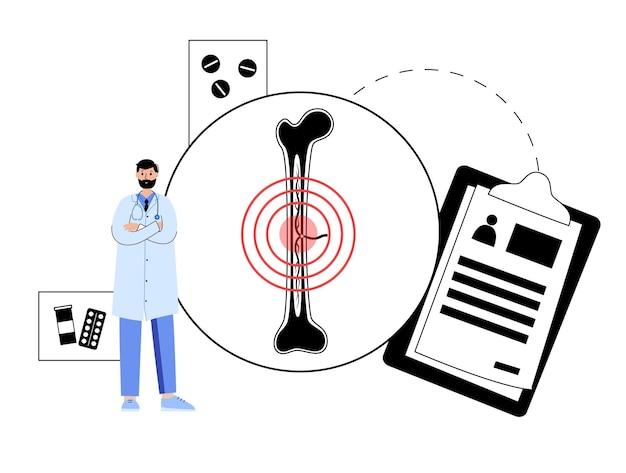In the world of fluid dynamics, the behavior of fluids can be classified into two categories: compressible and incompressible flow. Understanding these concepts is crucial when it comes to numerous applications, from engineering to meteorology. But what exactly do these terms mean?
In this blog post, we will explore compressible and incompressible flow in depth, answering questions like: “Can fluids be compressed?” and “What happens when gas is compressed but not liquid?” We’ll also delve into the compressed liquid assumption and the limitations of solids when it comes to flow. So, let’s dive in and unravel the mysteries behind compressible and incompressible flow!

What is Compressible and Incompressible Flow
Are you ready to dive into the fascinating world of fluid dynamics? Hold on tight as we explore the difference between compressible and incompressible flow. Trust me, this stuff is not as boring as watching paint dry!
The Quest for Flow Knowledge
Before we jump headfirst into the complexities of compressible and incompressible flow, let’s clarify what we mean by “flow.” Picture a river gushing downstream or a gentle breeze tickling your face. That’s flow in a nutshell—a phenomenon where a fluid (like air or water) moves from one place to another.
Now, let’s have some fun with vocabulary. Incompressible flow refers to the type of flow where the fluid’s density remains constant throughout the journey. Yep, it’s like that perennially chilled friend who never lets anything bother them. On the other hand, compressible flow involves changes in fluid density as it flows, making it the “mood swing” of fluid dynamics.
Compressible Flow: More Than Just Drama
So, why does fluid density matter? Well, in compressible flow, changes in density occur due to variations in pressure, temperature, and velocity. Imagine diving into the world of rocket science, where rocket engines rely on compressible flow to propel heavy loads into the sky. If you’ve ever dreamed of becoming an astronaut or just enjoy watching rockets blast off, you’ve encountered compressible flow without even realizing it!
In compressible flow, the fluid’s density varies significantly as it moves through different parts of the system. This variation can lead to some interesting phenomena, like shockwaves or supersonic speeds. Think of it as the Beyoncé of fluid dynamics—fierce, powerful, and ready to make some noise!
Incompressible Flow: The “Chill” Sibling
Now, let’s drift over to the other side of the flow spectrum—incompressible flow. Unlike its flashy counterpart, incompressible flow remains relatively unchanged in density as it glides along its merry way. Keep your cool as we explore some real-world examples of incompressible flow that are as common as a bowl of mac and cheese on a rainy day.
Ever taken a shower? That soothing cascade of water exemplifies incompressible flow. Whether it’s water gushing from the showerhead or flowing through pipes, the density remains relatively constant. In fact, most everyday situations involve incompressible flow, like the refreshing sip of your favorite beverage or the gentle breeze blowing through your hair.
Key Takeaways
So, there you have it—compressible and incompressible flow demystified in all their glory. From rockets soaring through the skies to the simple pleasures of a well-coordinated shower, the concept of flow brings us closer to understanding the fluid dynamics that surround us. Our journey continues as we dive deeper into the realm of fluid dynamics, exploring more mind-boggling phenomena and shedding light on the mysteries of the universe.
Be sure to buckle up and stay tuned for our next adventure into the captivating world of fluid dynamics!

FAQ: What is Compressible and Incompressible Flow
Is Blood an Incompressible Fluid
Contrary to popular belief, blood is not an incompressible fluid. While it is not easily compressible like solids, it still exhibits some degree of compressibility. Due to the presence of gases and dissolved substances, blood can be compressed to a certain extent under high pressure.
Can Fluids be Compressed
Yes, fluids can be compressed, but the degree of compressibility varies depending on the type of fluid. While gases are highly compressible, liquids exhibit low compressibility. So, while fluids can be compressed to varying degrees, the compressibility of gases is much higher compared to liquids.
Which State of Matter Cannot be Compressed
Among the three states of matter, solids are the ones that cannot be easily compressed. The particles in solids are closely packed, leaving little room for compression. So, if you’re ever in need of something uncompressible, just reach out for a trusty solid.
Which of the Following is an Example of Incompressible Flow
Flowing through pipes and channels, the steady movement of water is a classic example of incompressible flow. Although there might be variations in pressure, the density of water remains relatively constant, making it suitable for modeling as an incompressible fluid.
What is the Compressed Liquid Assumption
The compressed liquid assumption is an assumption made when analyzing fluid flow. It is assumed that liquids, which have a low compressibility, can be considered incompressible, simplifying the calculations. This assumption works well for most cases where the change in density due to pressure variations is negligible.
Why Can’t a Solid Flow
Picture a solid flowing like a liquid… hilarious, right? Well, solids cannot flow because their particles are closely packed and have a fixed position. The resistance to change in shape or to move as a whole makes solids the immovable objects that they are.
What Does Incompressible Flow Mean
Incompressible flow refers to the flow of fluids where density remains constant throughout the flow. In practical terms, it means that the fluid cannot be easily compressed. This type of flow is commonly observed in liquids, where the density changes very little under normal operating conditions.
What is the Highest Mach Number
Ah, the Mach number—the speed demon of fluid dynamics! It represents the ratio of an object’s speed to the speed of sound in the surrounding fluid. The highest Mach number achieved so far was roughly Mach 6.7, which belongs to the X-15 rocket-powered aircraft. That’s some serious speed!
What is Compressible and Incompressible Flow
Compressible flow refers to the flow of fluids where density changes significantly due to variations in pressure and temperature. This type of flow is mainly observed in gases, where density can vary considerably under different conditions. In contrast, incompressible flow refers to the flow of fluids where density remains relatively constant.
What is the Compressed Liquid Region
The compressed liquid region refers to the phase of a substance where it exists as a liquid but is subjected to high pressures. In this region, the liquid may exhibit some compressibility, although it is typically much lower compared to gases. It’s a fascinating state where liquids face the pressure (quite literally) to change.
How Do You Know if a Liquid is Compressed
Knowing whether a liquid is compressed requires an understanding of the pressure it is experiencing. If the liquid is subjected to high pressures that lead to a noticeable change in density, it can be considered compressed. However, for most practical applications, liquids are treated as incompressible unless extreme pressures are involved.
Which Fluids are Compressible
Gases are the primary culprit when it comes to compressible fluids. Due to the large spaces between gas particles, gases are highly compressible. On the other hand, liquids, like a stubborn aunt refusing to budge, exhibit low compressibility and are generally considered incompressible for many scenarios.
What Happens When Gas is Compressed
When gas is compressed, the pressure and density of the gas increase. The particles of the gas are forced closer together, reducing the volume occupied by the gas. This increase in density and pressure can result in a variety of effects, such as changes in temperature and the formation of dense gas or solid phases.
Why Can Gas be Compressed but not Liquid
While both gases and liquids are classified as fluids, their molecular arrangements and intermolecular forces differ. In gases, particles are widely spaced and have weak intermolecular forces, allowing for easy compression. On the other hand, liquid particles are closer together, making them less compressible.
What is the Most Compressible Liquid
If you thought air was the most compressible fluid, think again! Have you ever wondered about the wonders of liquid silicone? Yes, liquid silicone takes the crown for being the most compressible liquid. So, next time you need a bit of squishiness in your life, silicone’s got you covered.
And there you have it—your burning questions about compressible and incompressible flow answered! So, whether it’s blood’s compressibility, the perplexing behavior of solids, or the compressibility of those sneaky gases, we hope this FAQ section has left you both informed and entertained. Now, go forth and conquer the realm of fluid dynamics with your newfound knowledge!
